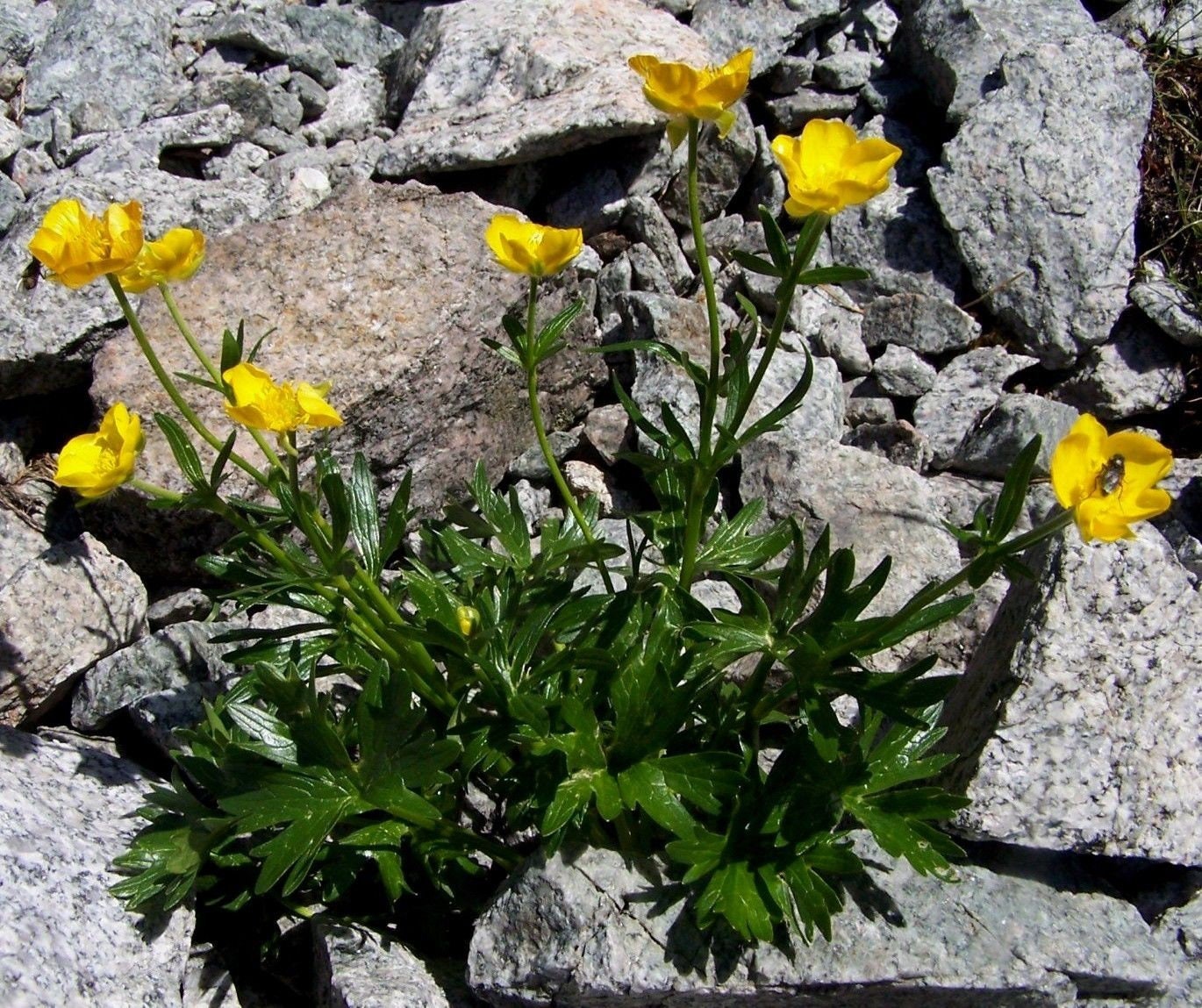

Some years, this species has been observed in flower as early as February, though more often blossoms appear from March to June, depending on the elevation where the plants occur. Why the thick roots? Perhaps they store a sufficient amount of food to let Jupiter buttercup produce its showy flowers almost as soon as the ground thaws in early spring. It is the cluster of fleshy, thick roots that resemble miniature baseball bats. But the Jupiter buttercup’s most distinctive feature cannot be seen aboveground. The uppermost leaves sometimes form a whorl surrounding the relatively large flowers.

Leaves of Jupiter buttercup are deeply three-lobed and resemble the foot of a bird (another common name for Ranunculus is crowfoot). Like most buttercups, it has flowers with five bright yellow petals and a ball-like head of numerous 1-seeded fruits. The Jupiter buttercup is one nearly 80 species of Ranunculus found in North America. Wyoming botanist Aven Nelson came up with the name in 1900 to commemorate “The Thunderer”, a peak in the Absaroka mountains of northeastern Yellowstone National Park where the type collection was made, and not to be facetious about the little buttercup’s unimposing stature. How in heaven did a pretty yellow wildflower with stems no more than four inches tall get the name of Jupiter buttercup? The species epithet “jovis” and the common name both come from Jove or Jupiter, the largest planet in the solar system and the all-powerful god of sky and thunder in Roman mythology. Johnson.Ĭlose-up of the diminutive Ranunculus jovis.

Ranunculus jovis blooms early in the spring as soon as the snow melts.


 0 kommentar(er)
0 kommentar(er)
